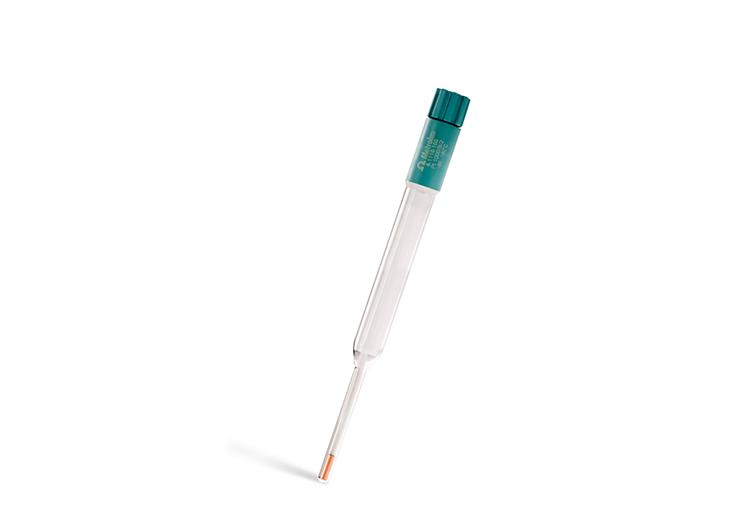AN-I-014
2020-05
Bromide in water
Fast and inexpensive determination according to ASTM D1246
Summary
Bromide is commonly found in nature along with chloride salts, such as sodium chloride, due to their similar physical and chemical properties. However, bromide is present in much lower quantities than chloride. Bromide concentrations in seawater are generally between 65–80 mg/L, whereas chloride concentration is about 300 times higher. The bromide concentration in fresh water is normally lower than 0.5 mg/L.
Wastewater of e.g. coal-fired power plants can contain elevated levels of total dissolved solids, including bromide, which is not easily removed by wastewater treatment plants. Furthermore, bromide can react with disinfectants used for drinking water treatment (e.g., ozone), forming brominated disinfectant byproducts, which are associated with increased cancer risk.
To assess the bromide concentration in surface water, ground water, and wastewater, a fast and inexpensive measurement of the bromide concentration can be performed by using an ion selective electrode.
Sample and sample preperation
The method is demonstrated for water samples spiked with different concentrations of bromide (75 and 130 mg/L Br-). No sample preparation was necessary.
Experimental

This analysis is carried out automatically on the 867 pH Module equipped with a bromide ion selective electrode, a reference electrode, and a temperature sensor. The ISE is calibrated prior to the analysis.
Ionic strength adjustor is added to the sample to fix the ionic strength. To homogenize the mixture, it is stirred for 1 minute. Afterwards, the sensors are placed into the sample and the bromide concentration is measured.
Results
Results are taken after a minimum of 60 seconds when the concentration reading has stabilized. The obtained relative standard deviation is smaller than the 15% requested by the ASTM standard.
| Mean Br- content in mg/L | SD(abs) in mg/L | SD(rel) in % | |
| Sample 1 | 75.5 | 0.5 | 0.6 |
| Sample 2 | 129.7 | 1.1 | 0.8 |

Conclusion
The concentration of bromide can be determined quickly and inexpensively by using the ion measurement technique. With the described technique, concentrations between 0.5–1000 mg/L can be measured. Using an automated system helps to increase precision. Solutions are added accurately and you can save valuable time for other tasks, as the system runs autonomously.
Internal reference: AW ISE CH2-0159-042017






 애플리케이션 공유
애플리케이션 공유
 다운로드 PDF
다운로드 PDF